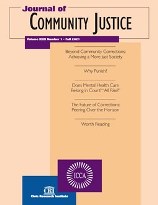Homelessness and Prisoner Reentry: Examining Barriers to Housing Stability and Evidence-Based Strategies That Promote Improved Outcomes
Author: Patricia McKernan.
Source: Volume 27, Number 01, Fall 2017 , pp.7-14(8)

< previous article |next article > |return to table of contents
Abstract:
Homelessness and housing instability among individuals leaving prison or jail can be a significant impediment to successful community reentry. This article examines the barriers homeless ex-offenders face in accessing emergency and permanent housing and what strategies can be employed to improve outcomes. The article considers how the rationing of social services to ex-offenders has had a negative effect on successful prisoner reentry and how these ineffective policies fail to promote public safety. Collateral sanctions such as ineligibility for social entitlements or community notification, compounded by the increased trend of ex-offenders leaving prison without supervision, increase housing instability. Planning for discharge, expanding transition services, and providing targeted housing for ex-offenders can play a critical role in improving housing stability, especially for those ex-offenders who have a mental health diagnosis, a history of addiction, or who have been convicted of a sexual offense. Creative collaborations among stakeholders can promote positive outcomes that result in cost savings across multiple systems.Keywords: Ex-offenders, homelessness, prisoner reentry, housing instability, shared living arrangements
Affiliations:
1: Rutgers University School of Social Work.